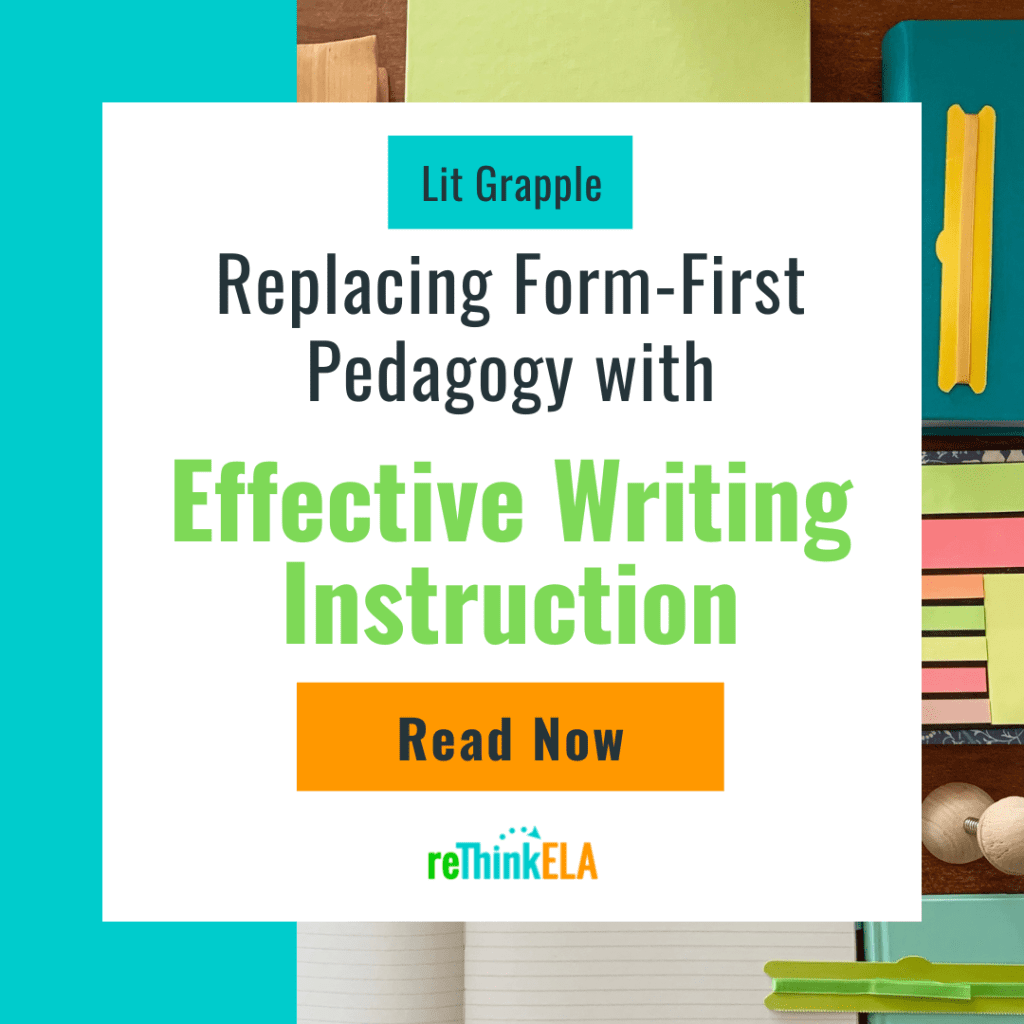
If you've ever asked middle or high school students to write essays, chances are you received several papers that felt like paragraphs glued together in no particular order -- just random bits of information, scenery, or assertions that don't build on one another to accomplish anything. You've probably also had at least one student ask you, " So, how many sentences do you want in a paragraph?" or "How many words do you want in this essay?" Students are hyper-focused on form and not thinking at all about the purpose or function of an essay. How do we convince students to break out of their five-paragraph essay boxes and start drafting essays that a built to serve an argument, tell a story, or teach something?
This is not a new problem. I first wrote about it in my 2018 blog post: "Think Function Not Form: Stop Teaching Students Structure Supersedes Message" in which I suggested teachers help students understand how to create an essay structure that serves the purpose of their essay. Of course, figuring out how to change students' mindsets when they show up in your middle or high school English class is a challenge in itself.
As part of my doctoral studies, I started reviewing the research -- both empirical studies and practitioner articles -- that I've read over the past five years on topics related to student reading and writing, and completed what one of my colleagues and my advisor call lit grapples. Basically, I am not only analyzing articles, but also synthesize them into my research to help me find the problems that exist in reading and writing instruction, discover areas that have not been researched, and find solutions that English teachers can use in their classrooms to help students improve their writing skills.
I tell you this because my process led me to rediscover "Slay the Monster! Replacing Form-First Pedagogy with Effective Writing Instruction" by Kathleen Dudden Rowlands and published The English Journal in July 2016. (If you're a member of National Council of Teachers of English, you can access the article online in the NCTE library.
I usually try to limit my search parameters to articles no more than five years old, but I first discovered this one around 2018 and it made a huge impact on my teaching practice. It helped me realize why my students were so enamored with the five paragraph essay and gave me some hope that I could find ways to help them grow out of it.
The main premise of Rowland's article is that form-first writing instruction, a common example of which is the five-paragraph essay, prevents young writers from learning how to write. However, teachers continue teaching these ineffective practices because of traditional beliefs and habits and a lack of easy-to-adopt replacements. Some teachers also claim that this form-first approach serves as scaffolding for developing writers -- however, these rhetorical training wheels often cause more harm when students refuse to write without them.
"Form-first instruction severely misrepresents composing's complex, messy, recursive nature. This oversimplification by form-first instruction gets in the way of enabling students to develop considerations of audience and purpose that drive authentic content choices and arrangements. Form-first instruction gets in the way of teaching students how to write."
Instead, we should start using the well-researched, time-tested techniques that are already available to help students develop the critical skills they need to truly craft a message in writing.
Mentor Texts
Rowlands answer to this problem is to teach students the writing process. This process starts with brainstorming, also called prewriting, which includes sharing mentor texts with students. Writing is often like putting the pieces of a puzzle together and students need a few puzzle boxes to look at so they can see what their written piece might look like. (I know, unlike with a puzzle, they're not creating an exact duplicate. But instead looking to see what exists so they can emulate that form and function, and eventually branch out on their own to create their own puzzles.)
Mentor texts do more than just show students what a finished text might look like.
"Use texts students are reading as mentor texts to introduce craft moves, and invite students to emulate those moves."
In short, students can examine each mentor text to see both how the author's craft impacts them as readers and how the author used their writing skills to create that effect.
"Genre taxonomy is untidy, but attention to the conventions and characteristics of various genres provides models students can use to expand their own repertoire of written forms."
You can check out some of the mentor texts we've curated or created for you here:
Writing Conferences
Since reading this article and becoming an Oklahoma Writing Project Teacher Consultant, my goal has been to provide students mentor texts so they can see what good writing looks like, model the writing process so they can emulate what a good writer does, and provide individual feedback to help students see how they can expand their writing repertoire within the context of their own work. This, of course, involves helping students see revision as a process that happens separately from correcting punctuation errors.
"Teach students the difference between revision (reseeing, rethinking a piece globally) and editing (attending to word and sentence-level issues). Published authors know that revision is the heart of producing effective writing."
Helping students see both how to revise and the value in revision requires students have access to writing conferences, either with their teacher, with a trained peer, or both.
If you haven't yet thought about how you could teach writing different, Rowland's article provides the basic bones of a new way to envision writing instruction in your classroom.
